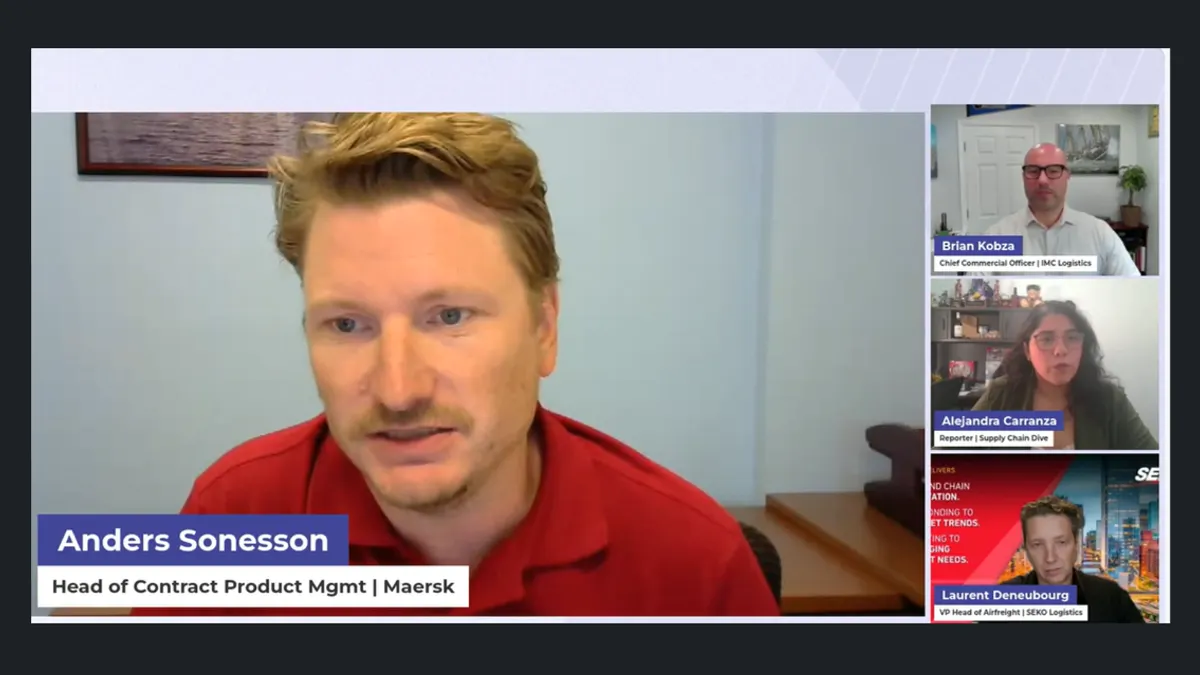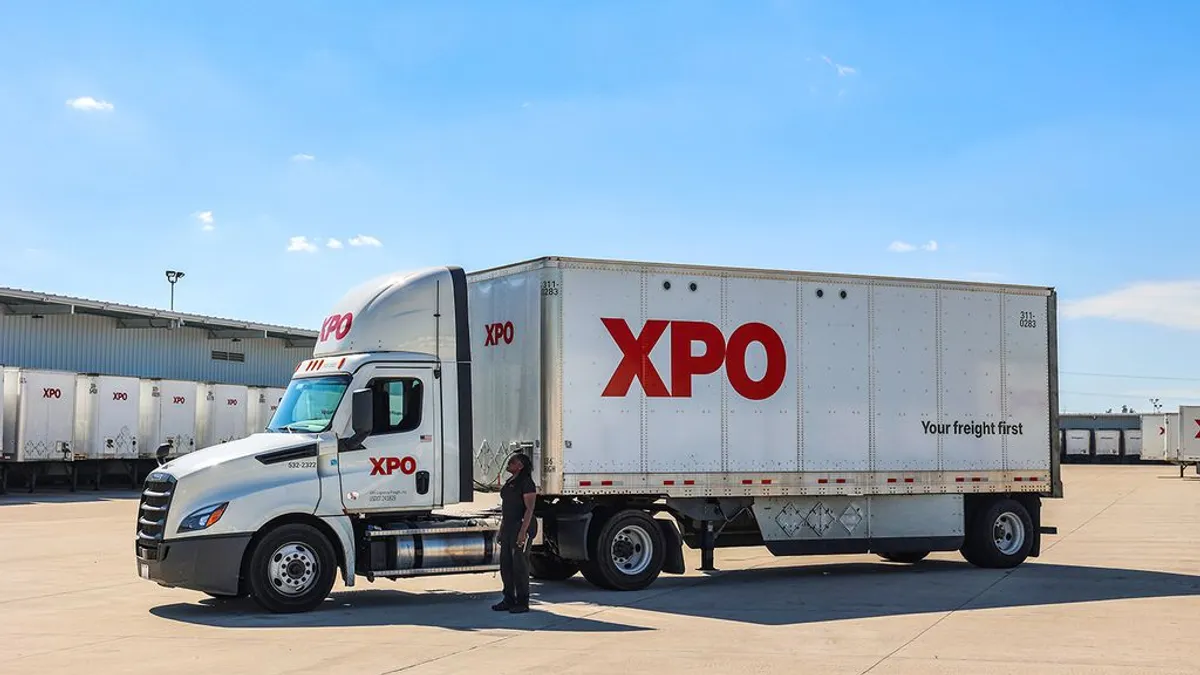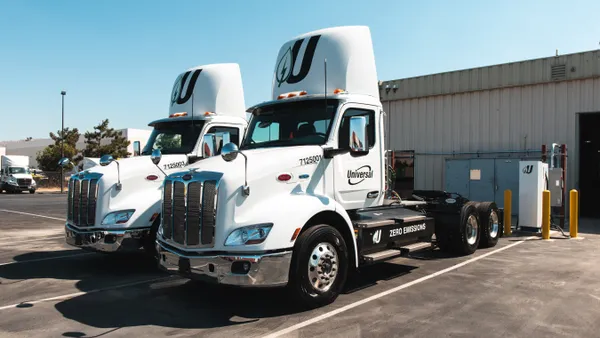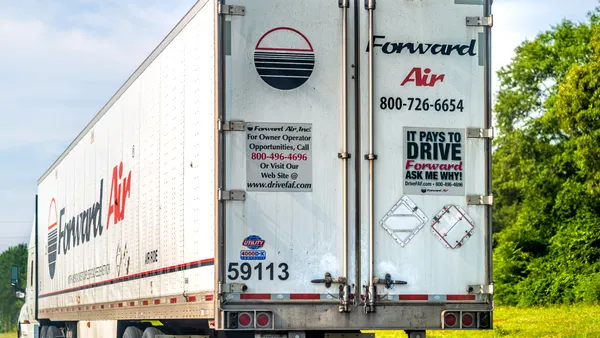Editor’s note: This story is part of a series highlighting takeaways from a July 23 event hosted by Supply Chain Dive, Trucking Dive, Manufacturing Dive and Packaging Dive. Register here to watch the replay on demand.
An uptick in port volumes and resilient consumer demand are contributing to more positive forecasts as trade and economic uncertainties persist, transportation leaders said during Trucking Dive’s July 23 event, “Supply Chain Outlook: Trends and Risks to Watch in 2025.”
Marine drayage provider IMC Logistics projects a strong H2, Chief Commercial Officer Brian Kobza said during the event. “I'm not saying super high peak volumes or anything, but solid, solid volumes coming through,” Kobza said.
The logistics industry saw a “very strong ocean market in Q1,” said Anders Sonesson, A.P. Moller - Maersk’s head of contract product management for North America.
Various ports on the West Coast reported year-over-year rises in loaded imports from January through April, according to data from California ports in Los Angeles and Oakland as well as the Northwest Seaport Alliance in Washington.
Sonesson added that a spike in tariffs contributed to a decline in volumes from April until mid-May before shippers began resuming cargo frontloading. But it’s difficult to pinpoint exact causes of demand, even in a normal year, he said.
“We see the underlying market still relatively strong,” Sonesson said.
Kobza similarly noted that market momentum, observing strong activity in July on the West Coast. He expects growth in East Coast volumes in August, and IMC is ramping up for that, hiring drivers, dispatchers and personnel.
Shipping customers' needs have shifted as tariff uncertainty persists. Lawsuits challenging President Donald Trump’s authority on the measures have also created a haze over future planning.
Panelists, including Seko Logistics’ Laurent Deneubourg, VP head of airfreight, advised stakeholders to be agile and flexible given the dynamic trade environment.
Customers need to adapt and accept a “very dynamic environment,” Deneubourg said. “Diversification is key.”













